Top image: Soviet troops awaiting a German attack in the Stalingrad suburbs, 1942. Credit: Unknown Ukrainian photographer/Public Domain.
Eighty years ago, the Red Army managed to stop, contain, and ultimately defeat the largest German army on the Eastern Front. Yet we are still asking ourselves: how did they manage to do it? This question is especially pertinent since the first year of the war generally proved disastrous for the Soviets. Both sides offered their own parochial explanation often determined by the ideological paradigms of the Cold War.
Entrenched in Western literature was a heavily German-influenced view which dictated that the initial German approach toward the city encountered limited opposition until fighting for the city proper began among the ruins of Stalingrad. It was only then that the Red Army was able to begin bleeding the 6th Army dry as a fanatical but faceless enemy utilized every bombed-out building, hole, and sewer to make life hell for the average German soldier. Once German forces were depleted, their allies failed to pick up the slack and crumbled on the flanks as the Soviets launched their offensive and were able to encircle the 6th Army in the remains of Stalingrad and its periphery. At that point, those trapped in the city might have been able to escape had Adolf Hitler and 6th Army commander, Friedrich Paulus, acted in their best interest and not betrayed them.
In the Soviet Union, the history of the battle for Stalingrad was surrounded by its own coterie of myths. Similar to the Soviet narrative that was created around 1941, Soviet propaganda claimed the genius of Joseph Stalin’s command abilities lured German forces to the gates of Stalingrad to wear down the 6th Army and eventually surround and destroy it. German forces were stymied by the 62nd Army as the Soviet high command strategically fed rifle divisions, including elite Guards units, while husbanding larger forces for an eventual encirclement. Meanwhile, the commander of the 62nd Army, Vasily Chuikov, implemented new small-unit tactics that helped Red Army forces close the distance with the enemy and achieve remarkable feats in the rubble strewn streets of Stalingrad.
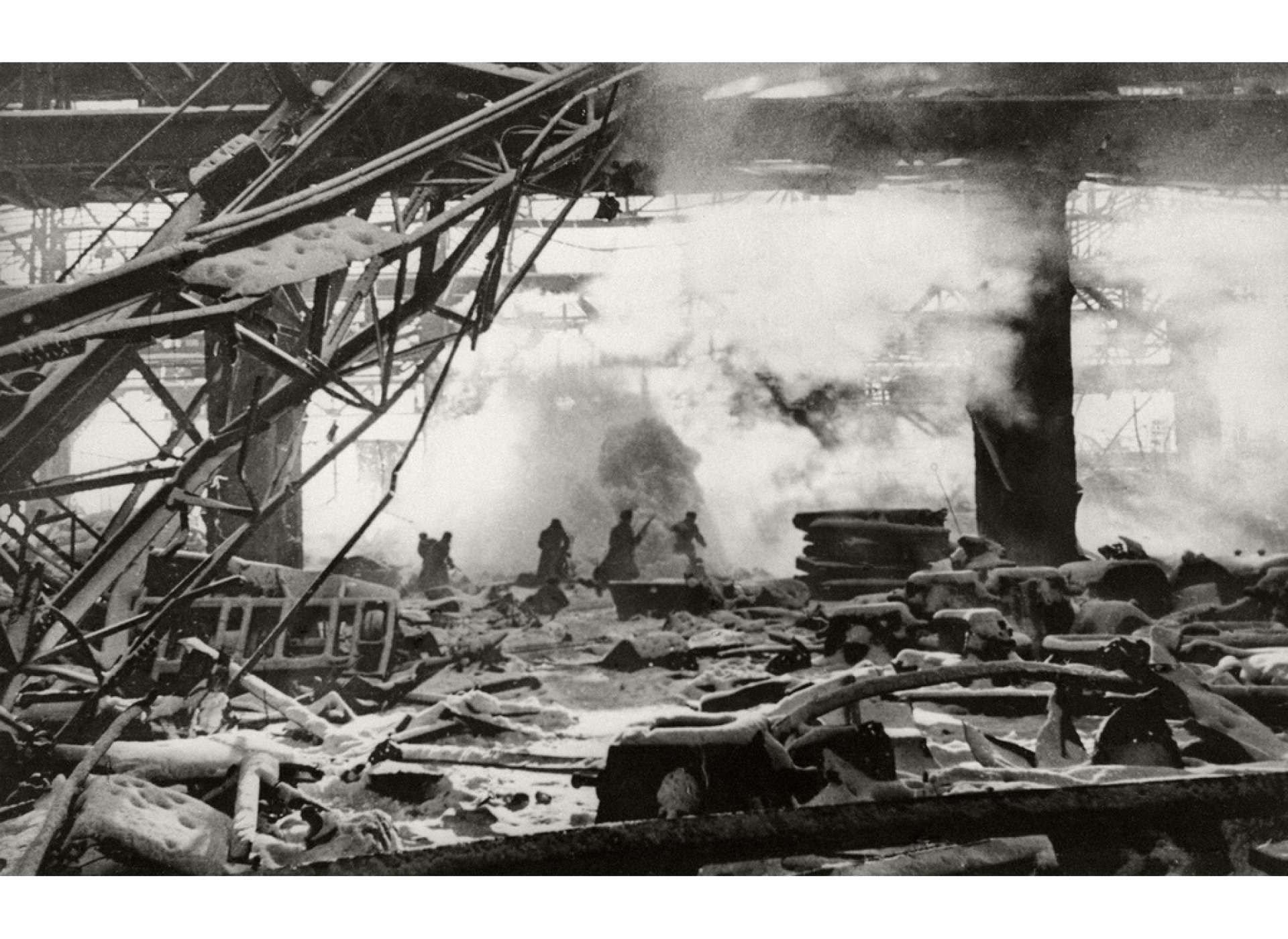
Fighting on the territory of the “Red October” factory, Iakov Riumkin, 1942. Source: МАММ/МDF.
Only in the past few decades, with the limited opening of Soviet archives, have researchers been able to offer a more nuanced understanding of the Red Army’s actions throughout the 1942-1943 campaign. While our knowledge of the battle has deepened, there are still numerous questions that remain unanswered. Looking at the German approach to Stalingrad offers us an ability to analyze the strategy and tactics Soviet forces implemented and the larger implications of the lessons learned. Along with important and ongoing reforms within the Red Army, this period saw a reactivation of tank and mechanized corps, which were previously disbanded in August 1941, when the Red Army underwent a type of de-mechanization, as well as the recreation of rifle corps. These units became the foundation of Operation Uranus and were instrumental in the eventual defeat of the Sixth Army.
Unlike 1941, when German forces unleashed Operation Barbarossa with three army groups moving toward Leningrad, Moscow, and Kiev, in the spring and summer of 1942 the Wehrmacht was mainly concentrated in the region of Army Group South and aimed toward Stalingrad and the oil of the Caucasus. Due to losses sustained over the previous year, Germany’s allies were pressured into increasing their presence on the Eastern Front: for the 1942 campaign the Romanians fielded 27 divisions, the Hungarians 13, and the Italians 9 – a force of some 440,000 men. Most of these troops could be found in and around Army Group South and became instrumental in helping guard the 6th Army’s flanks as it advanced into Stalingrad.
The initial success of Operation Blau, the advance on Stalingrad and the Caucasus, resulted in Hitler’s decision to split the army group in two to speed up progress. Army Group A was slated for taking the oil fields in the Caucasus while B was aimed at Stalingrad. Originally, German planning did not fixate on Stalingrad. The city was not the main point of the offensive into the Soviet south – the goal was oil. In fact, the seizure of Soviet oil fields continued to be the overriding concern for Hitler and his high command even as street battles eventually unfolded in the city. The German high command again repeated the mistakes of the previous year in that it could not fully concentrate on one overriding objective. Instead, the army’s logistical net became overstretched, and it was subject to consistent attacks by an increasingly sophisticated Red Army. This sealed the fate of the 6th Army as it became logistically impossible to fully support its attempt to take Stalingrad. Instead, Paulus had to make do with limited forces while facing multiple Soviet armies in the city itself and on its flanks.
As the German spring/summer campaign began, Soviet commanders were unsure where the main German offensive would unfold, partly because they believed Moscow remained the supreme prize. Moreover, the Germans launched a deception campaign designed to reinforce those Soviet fears. As a result, Georgii Zhukov was left operating opposite Moscow and received ten armies as reinforcements for his Western Front. Meanwhile, in the south, the Germans achieved a fresh victory around Kharkov as the Red Army sustained hundreds of thousands of casualties. During the Kharkov encirclement, Soviet forces suffered from a lack of intelligence and reconnaissance, logistical issues, and an inability to determine exactly when newly created armored forces should be employed to achieve the best possible results. The Germans felt elated especially after the disastrous winter months of 1941 and 1942, when Army Group Center was pushed back from the outskirts of Moscow. However, the hubris of 1941 was about to repeat itself on the southern Russian steppe.
As the 6th Army resumed its offensive, they soon found themselves operating against the 62nd and 64th Armies. Their original composition differed significantly from those that would later defend Stalingrad proper. Initially, what became the 62nd was a reserve army located in Stalingrad while the 64th arrived from the Tula area and assumed a position on the left flank. Soldiers in both armies lacked machine guns and were mostly armed with rifles. As Paulus pushed towards Stalingrad, the city still produced tanks and artillery, as well as continuing to dig in for a defensive battle. T-34 and T-60 tanks, both made in and around Stalingrad, were built and immediately assigned to tank battalions. Divisions in the 62nd Army were assigned one tank battalion each.
Soviet commanders sent these small tank formations headlong against the Germans. The idea was to have these forward tank battalions engage the enemy in battle, slow down German progress, and make them abandon their march columns as they assumed combat formation allowing the Red Army to determine the enemy’s axis of movement. Unfortunately, the outcome was disappointing. These engagements resulted in significant losses and deprived the forces defending Stalingrad of much needed personnel and equipment. At times, the German drive proved so successful that in one instance the Luftwaffe mistakenly bombed one of the spearheads of the Grossdeutschland Division refusing to believe any German force could advance so quickly.
While the Germans made regular progress, Army Groups A and B only came away with 150,000 Soviet prisoners of war. Significant Red Army forces escaped and continued resisting and wearing down German spearheads. For the Soviets, these engagements on the approaches to Stalingrad grew from employing tank battalions to entire tank corps and experimental tank armies. However, larger Soviet tank formations continued to exhibit logistical, technical, and mechanical weaknesses that resulted in limited success. One example was the 13th Tank Corps, which was attached to the 62nd Army. On paper, the corps consisted of 157 tanks, including ninety-four T-34s and sixty-three T-70s. However, its commander was newly appointed and had previously only commanded a brigade. The tank drivers had only 3-5 hours of driving experience while the lone motorized brigade, which provided badly needed infantry support, contained only 27% of its rank and file. Finally, artillery support consisted of a paltry sixteen 76mm guns and four 45mm guns. All these shortcomings meant even large tank forces compared poorly to their German counterparts.
Helping defend Stalingrad throughout August were a stream of reinforcements – 15 rifle divisions and 3 tank corps. The 62nd Army attempted to identify the 6th Army’s avenues of approach and created a multi-layered defense. This meant some divisions held one or two dozen kilometers of terrain while others were left holding an inordinate amount of territory, including the 196th Rifle Division, which needed to defend 30-40km – some 5-7km per battalion. As it turned out, this was the exact division the Germans ended up attacking, thanks in part to the momentum of their advance. After passing through this division’s defenses, by the next day German forces stumbled upon a more formidable defensive line from the 33rd Guards Division.
At this point two recently established tank armies entered the battle. Their ensuing counterattacks against German forces were ineffective, as Soviet commanders were not yet experienced enough to coordinate combat operations for such large-sized armored forces. While corps commanders were competent overall, the tank armies they were placed in charge of consisted of a variety of units, including tank corps, cavalry formations, and infantry. Their uneven mobility and experimental quality, combined with the fact that commanders had less than seven hours to prepare their counterstrike, resulted in predictable outcomes and large casualties. In one instance, when a combat group from the 16th Panzer Division encountered Red Army tank forces, over a dozen T-34 and T-70 tanks were immediately knocked out and a brigade commander was killed, disrupting unit cohesion as well as command and control. Owing to inexperienced crews and a lack of radio tanks, the 176th Tank Brigade was annihilated during its first encounter with the enemy.
As these battles unfolded, additional forces were activated to take part in the fighting and, when they arrived, they were immediately thrown piecemeal into attacks against advancing German forces. Slowly but surely, Soviet formations were bled dry. Infantry forces lagged behind their tank counterparts and could not support them in time; when they did appear on the battlefield, few tanks were left to undertake further action. German infantry forces were also continuously arriving on the battlefield. Soviet commanders understood that they could not wait for all their reinforcements as the enemy would only be strengthened by any delay in counterattacks. As a result, they decided to continuously employ forces as they became available to deplete the Germans of as much of their strength as possible. This resulted in a rapidly shrinking tank park. Additionally, Soviet observers pointed out that many of these losses – at times more than half – were due to mechanical problems. In one instance, during six days of battle, twelve tank brigades lost 326 tanks – 200 of them to breakdowns.
After a week of counterattacks by two Soviet tank armies along with several tank corps, German forces were able to successfully encircle the remains of numerous Red Army rifle divisions – some 28,000 soldiers and officers. Soviet forces continued to resist as their situation became more desperate. Several commanders ended up shooting themselves and up to 1,000 men were killed as the encirclement was reduced. It took the Germans until August 15 to deal with those caught in the encirclement. The result was a significant delay that netted few prisoners. More importantly, these numerous engagements with the Red Army led to a stalemate for Paulus’s forces and he was unable to make further progress without significant reinforcements.
On August 23, as German forces approached the city from the north, they encountered the 1077th Anti-Aircraft Regiment. The ensuing engagement has become something of a legend, not least because many of the crew members were female. The 6th Battery alone claimed to have knocked out 28 German tanks, but the 3rd Battery encountered the hardest fighting. The after-action report of the regiment noted that “the battery’s girl warriors exhibited exceptional steadfastness and heroism.” The ensuing exchange cost the Soviet side 35 anti-aircraft guns lost, 18 killed, 46 wounded, and 74 missing in action in a matter of two days. Two women received the medal “For Valor” for their actions. Although this engagement is usually described as between only women gunners and German tanks, the reality was that while some women did partake in the defensive actions as described so, too, did numerous men.
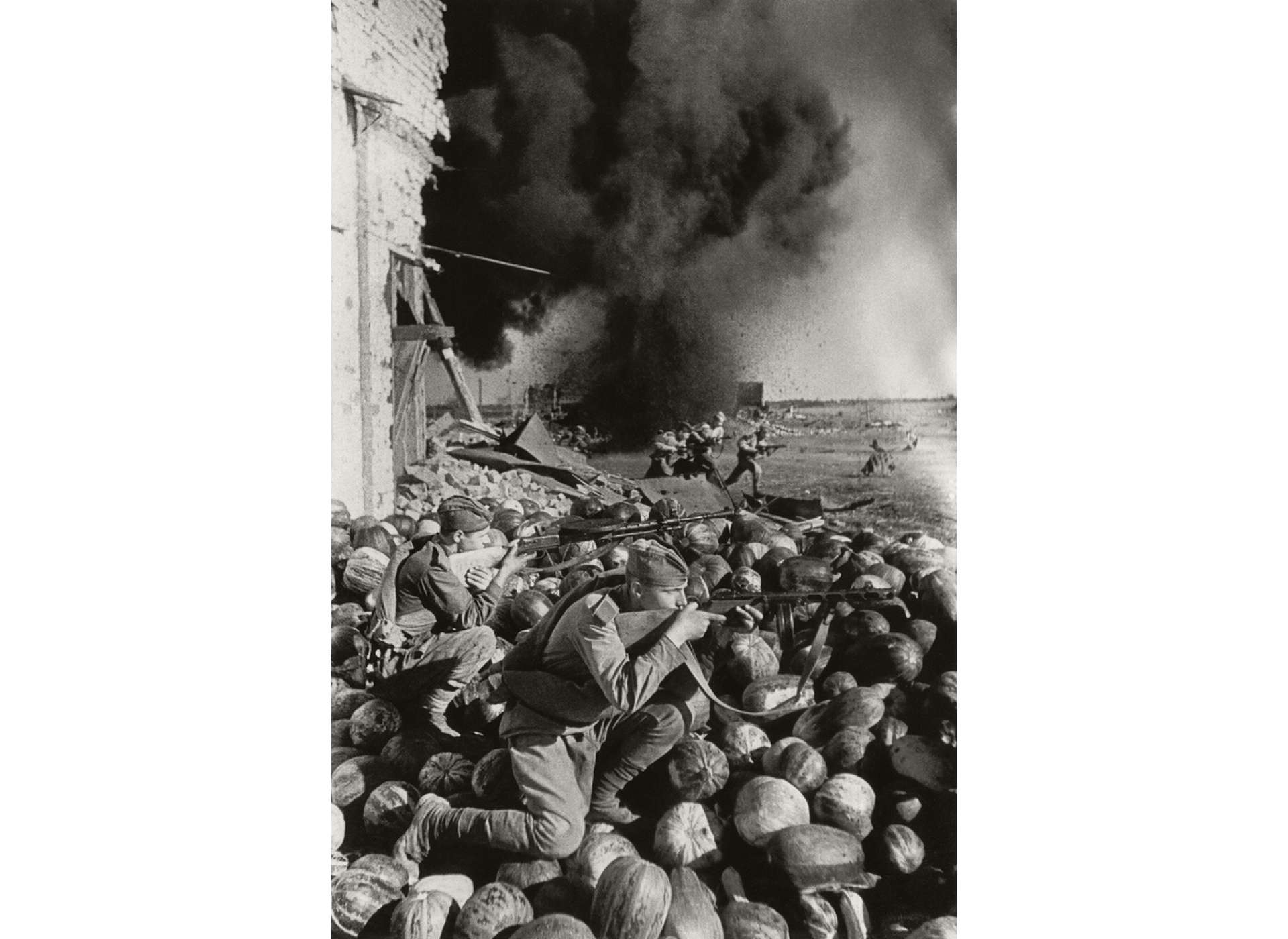
Battle in Stalingrad, Semen Fridliand, 1942. Source: МАММ/МDF.
On August 23, Paulus’s mobile formations were spread out on their approach to Stalingrad. The 16th Panzer Division had outrun its supplies and accompanying infantry just as it approached the city. The 3rd Motorized Division halted 12 miles to the rear of the 16th Panzer Division for the night while the 60th Motorized Division was bogged down in a ten-mile traffic jam. A veritable mechanized finger extended its way toward the Volga River. All three divisions were vulnerable to Soviet counterattacks on both flanks and the 16th Panzer Division’s commander ordered an all-around defense with his heavy artillery. These units were then cut off for days and had to be supplied by aircraft and convoys of trucks until infantry units and supplies could catch up. Similar to 1941, German commanders of mobile formations ignored their logistical needs and infantry support and advanced headlong into the enemy rear creating conditions for their own near or full encirclements.
Close to the end of August, Stalingrad factories continued to produce and repair tanks. German accounts discuss tanks, still unpainted, proceeding to the front; those tanks most likely belonged to the 99th Tank Brigade. One engagement to the north of the city that featured these tanks, fresh from the factory, took place as T-34 tanks attacked the 16th Panzer Division. Simultaneously, the 3rd and 60th Motorized Divisions were attacked by the 35th Guards Rifle Division which attempted to exploit the gap that had previously developed between the two formations. Soviet tanks in this instance were able to overrun the 64th Panzer Grenadier Regiment’s headquarters, forcing a German withdrawal.
As the battles on the approaches to Stalingrad ran their course, it was evident that the Red Army had undergone numerous changes since 1941. The initial appearance of large tank formations in the Red Army revealed a learning curve, since over the previous year the largest tank formations employed by the Red Army were tank brigades. Recently activated tank corps were often short of specialized equipment, technical knowledge, and support. Additional time was needed before the right combination of mobility and leadership was achieved. The first four tank corps consisted of two tank brigades, one motorized rifle brigade, and a few support units for a total strength of 5,603 men and 100 tanks. Growing production figures and lessons from the battlefield led to the inclusion of another tank brigade, pushing the number of tanks in these corps anywhere from 146-180 as well as the inclusion of additional supporting units in the form of a reconnaissance battalion, multiple rocket launchers, anti-aircraft guns, combat engineers, a transportation company, and two mobile repair groups. Their authorized strength increased to 7,200-7,600 men, although shortages of specialized equipment limited their communication and repair abilities.
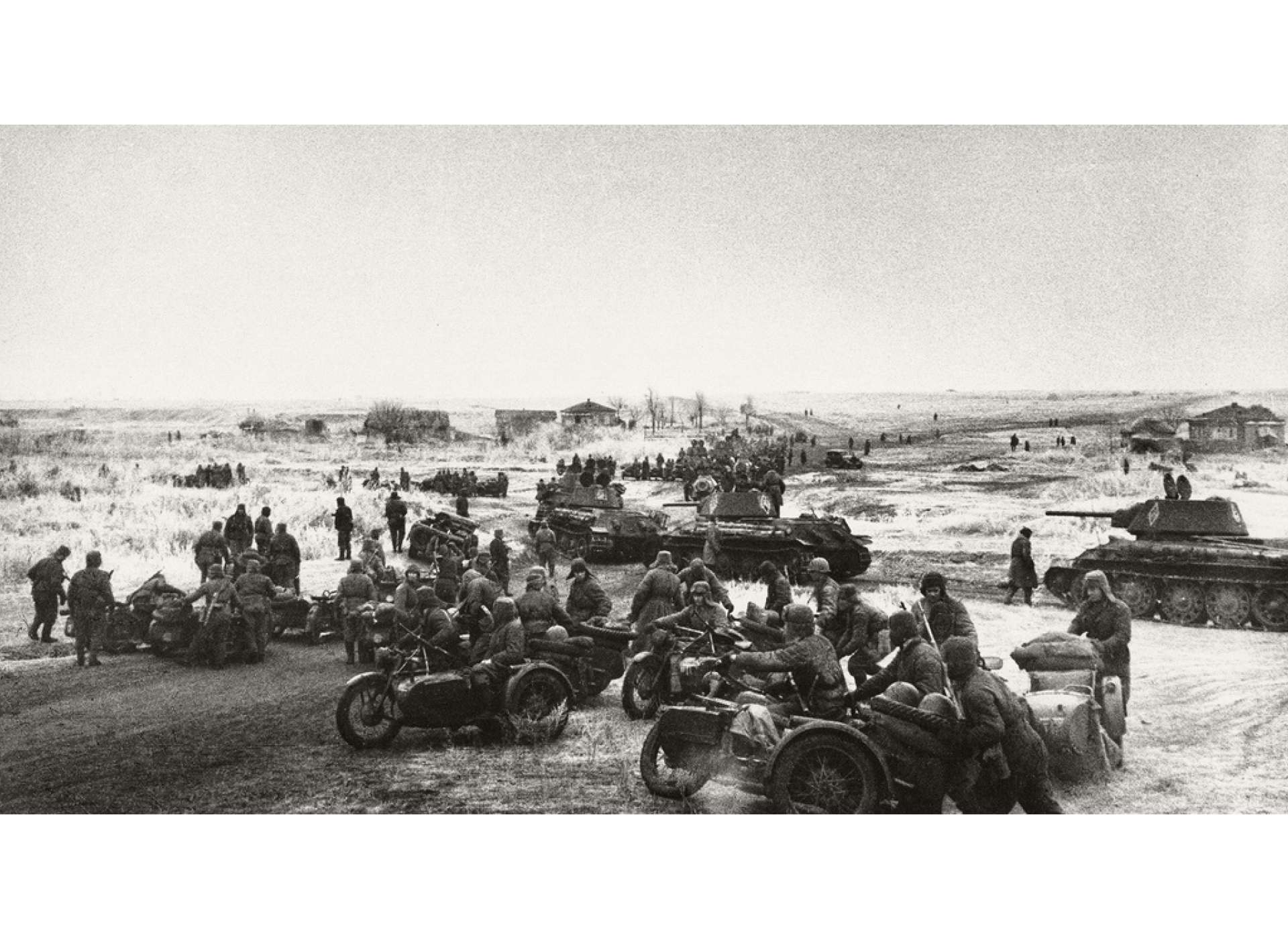
Stalingrad, 1942, Dmitrii Bal’termants. Source: МАММ/МDF.
Unfortunately, these new units continued to suffer reverses in the field. Soviet counterattacks resulted in serious losses that all but nullified the offensive power of the 4th Tank Corps which lost 140 of its 160 tanks in two days. The 16th Tank Corps performed relatively better, losing 84 tanks out of 180. There were opportunities for Red Army forces to make repairs but only if they controlled the field of battle at the end of the day. For instance, over a two-month period the 13th Tank Corps was able to repair 174 damaged tanks, about 3-5 per day, and was able to retain its tank brigade strength at around 20 – 25 tanks throughout August and September. Through engagements with these tank corps, the 6th Army was bloodied but not fully checked and, as Red Army forces were delivered to the front in piecemeal fashion, they often suffered as Soviet commanders felt the need to just put bodies and machines in front of the Germans.
Even with significant losses in tanks, there is no denying that the inclusion of these armored formations took a toll on German offensive operations. Paulus’s forces advanced 55-70 kilometers during the last two weeks of July, averaging 4-5 km per day. From August 1 to August 19, the advance slowed to 30-35km overall, or 1.5-1.75km per day. Because these initial battles on the approaches to Stalingrad were a learning experience too often both sides repeated mistakes from the previous year. German hubris meant they continuously underestimated their Soviet opponents, and Red Army commanders continued to poorly employ the men, armor, and artillery at their disposal. Nonetheless, Red Army progress would eventually compensate for any shortcomings. The Soviets were able to test their newly created tank formations in the field, and this led to the creation of a better balance of forces in tank armies which became the backbone of future Soviet offensive operations through the end of the war.
The ultimate test for these armored units came during Operation Uranus, the encirclement of the 6th Army in November. While the fighting in the city of Stalingrad itself was able to exhaust many of the 6th Army’s divisions, the encirclement of Paulus’s forces was achieved, thanks to the actions of multiple armies and mechanized/tank corps that benefitted from lessons previously learned and key decisions made by the Soviet High Command (STAVKA) during September and October 1942. On October 9, an order went out eliminating dual command in the Red Army. Up until then, Soviet commanders could be questioned and challenged by their political commissars; now commissars were reduced in power and Soviet commanders retained full control of their units. On October 16, another order authorized the independent deployment of tank and mechanized formations. They could now engage in maneuver warfare rather than having individual tank battalions, regiments, or brigades utilized as infantry support. Simultaneously, rifle corps were brought back into the Red Army’s order of battle as existing divisions and brigades were consolidated to improve command and control within armies. Finally, on October 23rd STAVKA formed the 1st and 2nd Guards Armies in its strategic reserve. Both armies were initially composed of two rifle corps and one mechanized corps as well as artillery and combat support units. This was the first time since July 1941 that these types of armies were created, as the leadership came to realize that at least some commanders had the talent and know-how to lead and integrate a complex mixture of combat arms and services. In November 1942 an additional step would be taken in the creation of numerous mechanized corps; a total of 8 were slated to be in the Red Army’s order of battle by December. Like rifle corps, these larger mechanized formations brought together and reorganized the wide variety of tank brigades, regiments, and battalions that remained visible in the Red Army since the initial elimination of mechanized corps occurred in August of 1941. These orders and decisions on the part of the Soviet High Command, an integral part of the larger planning phase for Operation Uranus, took weeks of preparation. This was unlike much of the previous planning that took place throughout 1941 and early 1942 when Red Army forces often had limited time to prepare offensive operations which often failed to live up to their potential. The result was the successful encirclement of the largest German army on the Eastern Front, but it came with numerous challenges and complications.
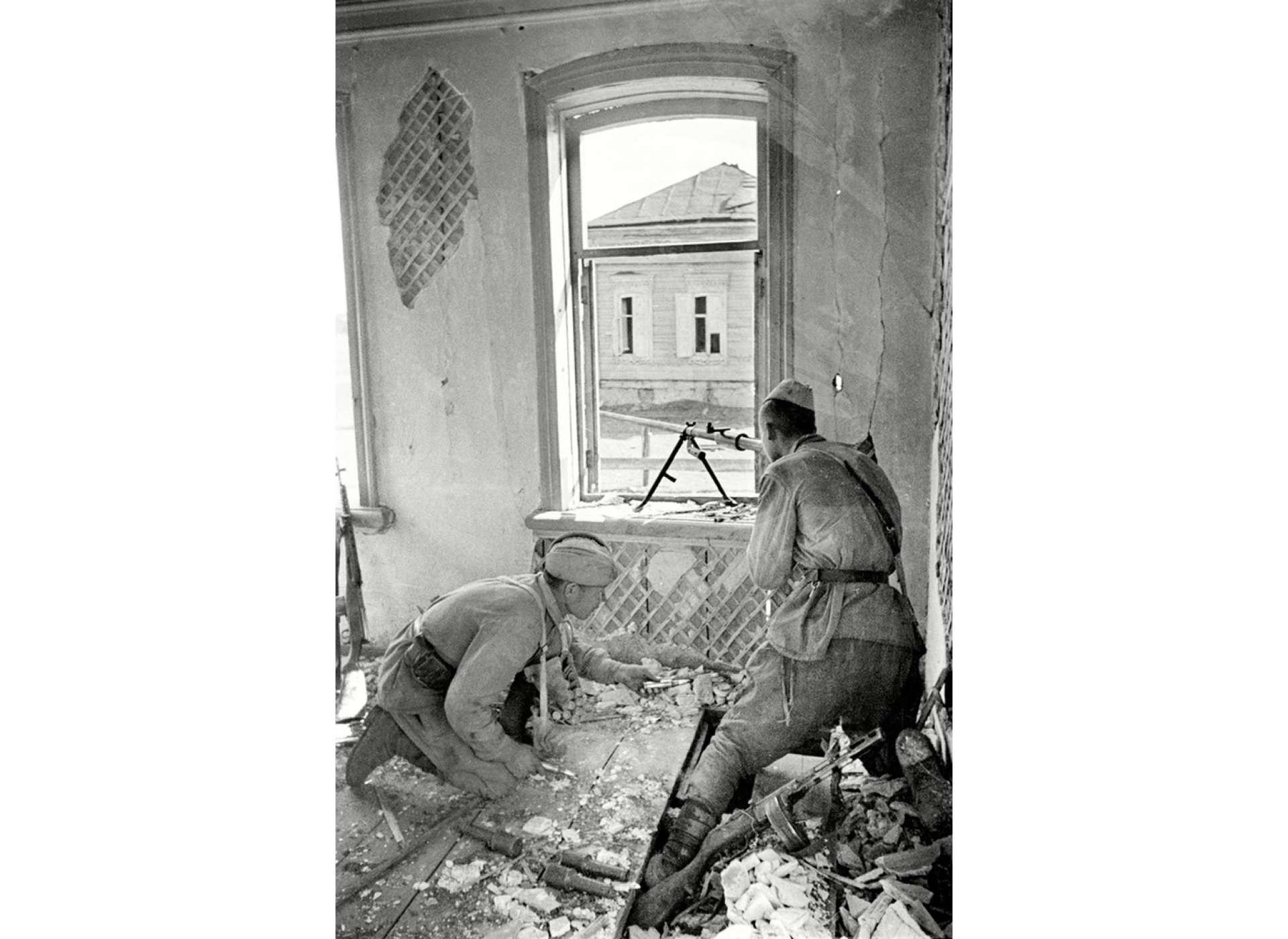
A battle for every house, Pavel Troshkin, 1942. Source: OAO “Gazeta Isvestiia.”
In the wake of the German victory at Kharkov, the Soviets scrambled to make up the losses sustained by Red Army forces, and they quickly dispatched any units available to slow down the German advance, especially when they were convinced that Moscow was no longer in immediate danger. This resulted in numerous tank formations being fed into battle as soon as they arrived. Unfortunately, Soviet troops often lacked combat experience and were weak in artillery. The only major mechanized formations to be found initially lacked experienced commanders and could not offer determined opposition or sustain a successful attack. Even so, German forces paid a price on the approaches to Stalingrad as they suffered heavy casualties while the Red Army gained experience. Soviet planning for a counteroffensive featured the creation of larger armored forces dedicated to maneuver warfare, as well as consolidating units by recreating rifle corps and doing away with dual command to better facilitate command and control. While the evolution of urban combat in the streets and buildings of Stalingrad has been noted and discussed in most histories of the battle, these actions on the approaches to Stalingrad served as a more significant source of experimentation and experience for future Red Army operations.
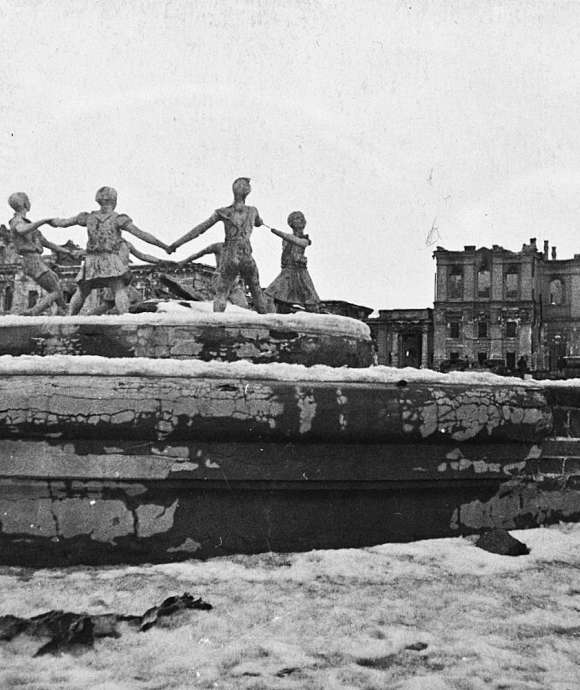
Stalingrad: Chaos on the Volga
The Battle of Stalingrad is familiar to many of those interested in the Eastern Front of World War II. It was one of the main turning points that sealed the fate of the Wehrmacht and the Third Reich. But much about the battle remains shrouded in myth and is often influenced by hindsight. Throughout this course we will look at the German advance and siege of Stalingrad—the Sixth Army's attempt to destroy the forces of the 62nd Army within the confines of the city. The course will also explore the Soviet attempts to keep Vasily Chuikov's troops supplied and reinforced as they scrambled to figure out how to defeat the Germans in the depths of the Soviet Union while fighting to save Stalin's namesake.
Enrollment opens on August 1, 2022. The course begins September 19, 2022.
Yan Mann
Yan Mann is a Clinical Assistant Professor of History and the Program Lead of the World War II Studies master’s degree program at Arizona State University.
Cite this article:
MLA Citation:
APA Citation:
Chicago Style Citation:
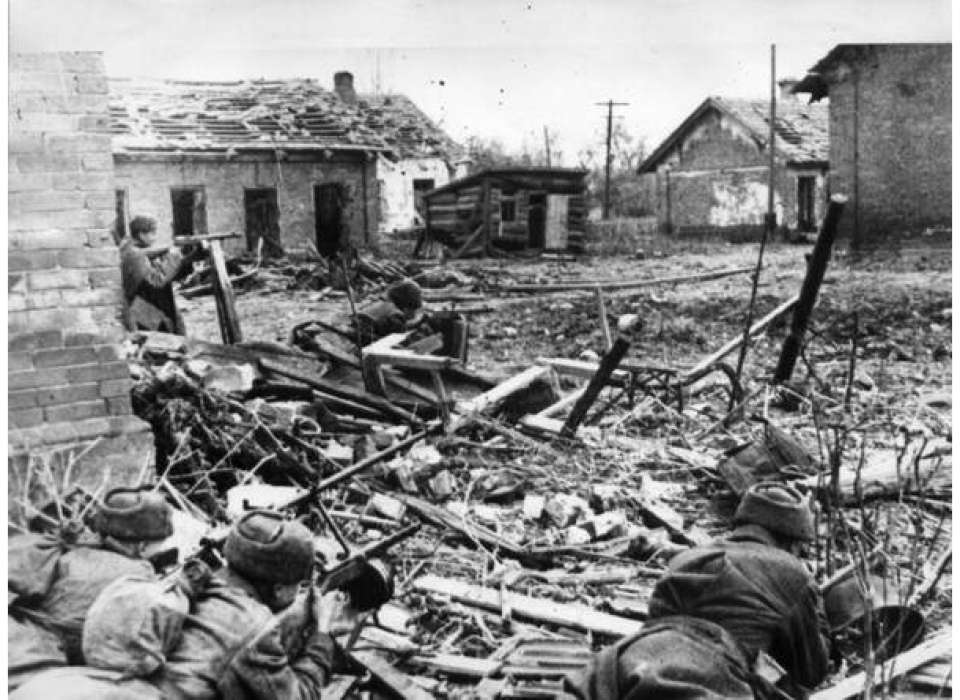




![Max Fuchs, New York City cantor, sings as Rabbi Sydney [sic] Lefkowitz, Richmond, VA, conducts the first Jewish services from Germany.](/sites/default/files/styles/max_650x650/public/2025-10/image1.jpg)



